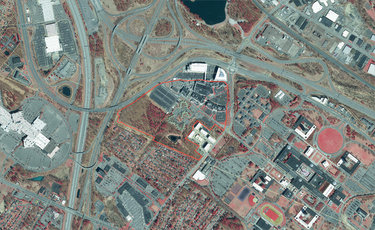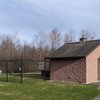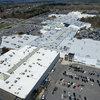Nine acres of trees to be clear-cut for tech parking lot in McKownville
McKOWNVILLE — The expansion of the NanoTech Complex just over the Guilderland townline in the city of Albany will see nine acres of trees felled to make way for a parking lot.
The $614 million facility sits on a 72.5 acre site and is part of the state and semiconductor industry’s $10 billion investment in semiconductor research at the University at Albany. The facility will include some of the world’s most advanced chip-making equipment.
A long-time McKownville resident expressed anger over the way the project would affect households on Mercer Street, which backs up to the facility.
The 310,000-square-foot, four-story research and development facility will house “a new 50,000 SF ISO 5 cleanroom,” which is a highly controlled environment designed to maintain extremely low levels of airborne particles and contaminants, and “a new 900-car parking garage,” according to DPS-Gilbane, the joint venture building the project.
Guilderland Town Planner Kenneth Kovalchik told The Enterprise by email that the town received a State Environmental Quality Review request from the consultant representing the applicant for the proposed 750-space parking-lot expansion in the Albany NanoTech Complex.
“The proposal includes 9 acres of tree clearing, which includes 6 acres for the new parking lot,” Kovalchik said. “The Town will be providing comments on the Full Environmental Assessment Form and concept site plan included with the coordinated review materials by March 17th.”
McKownville resident Donald Reeb said there are approximately two dozen homes on the section of Mercer Street that backs up to the NanoTech Complex.
The retired University at Albany professor who for years had headed McKownville’s neighborhood association made clear his comments were his alone and not the association’s.
Reeb said, “Regardless of what the environmental impact statement does or does not say — and the EIS would in all likelihood … say that there’s no negative impact, which, of course, everybody recognizes as a lie because EIS almost always say there’s no negative impact as if somehow or another the traffic in front of your house doesn’t affect you.”
Reeb said there’s no indication of how the roughly two dozen households are supposed to cope with the change in their living conditions.
“There will be runoff from the storm water. There will be noise from the parking lot. There will be less of a barrier from the noise of the Northway and Thruway,” Reeb said. “There will be lighting problems from the parking lot that will shine in the backyards and front yards and the houses of the people living there. There will be less in the way of habitat.”
The people now living there can see deer, turkey, and foxes in their yards, and they undoubtedly will disappear or become less, said Reeb.
“This will go on and on. And the New York Creates is not providing those people with any hint, any idea about, well, how are they supposed to maintain their quality life after the construction. What are they supposed to do? Bury their heads in the sand?”
Reeb went on, “The two dozen households on Mercer have very little power; they’ve cultivated a way of life with their neighbors, friends, and the surrounding environment. Now, this will all be negatively affected. While not life-threatening, it deeply impacts their quality of life, Reeb said.
Reeb concluded, "And that’s wrong. It’s just dead wrong, and that’s my concern.”
NY CREATES, the public-private entity overseeing the development, in response to an Enterprise request, said in part, “We know it is important to minimize environmental impact. We follow all rules and regulations related to supporting growth of the site, including participating in the State Environmental Quality Review (SEQR) and Storm Water Pollution Prevention Plan (SWPP) process, during which all relevant local, regional, and state government agencies examine the potential environmental, social, and economic considerations of a project. In addition, leaders from our organization have also met with our neighbors as a courtesy.
“Conducting appropriate due diligence and following these processes has allowed for feedback that we have incorporated into our plans. One example results from a local environmental organization, who suggested the use of special LEDs for outdoor lighting, which is expected to benefit and avoid disrupting any nocturnal animals. Additionally, detailed planning will also ensure that any stormwater runoff will be directed to a detention pond and will not flow to adjacent properties.”



